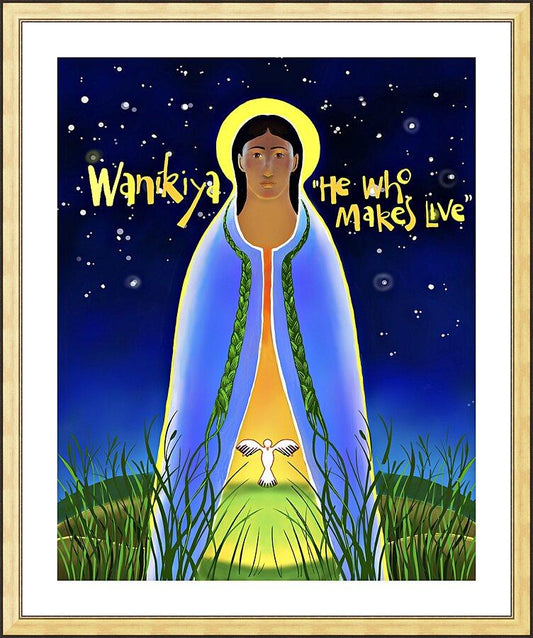ARTIST: Br. Mickey McGrath, OSFS
ARTWORK NARRATIVE:
Black Elk’s witness is important. Jesus was not just a good teacher, but the key teacher. Lakota people call Jesus Wanikiya, “He Who Makes Live.” For Black Elk, Jesus and his new life were the answer to a collapsing world: Only He can fully heal the Earth, bring back the dead and explain how to make sense of the newcomers.
Black Elk explained this hope in a 1909 letter he wrote to the Lakota. He listed the tribes he visited and included the settlers among them. All — whether Lakota, allies or former enemies — are good people and he prayed for all. “We all suffer in this land,” Black Elk wrote. “But let me tell you, God has a special place for us when our time has come.”
Read More
Servant of God Nicholas Black Elk (1867-1950) is an example of discipleship for our times, though he lived the faith in a completely different context.
Black Elk was born into the Oglala Lakota people and grew up hunting buffalo on the Northern Plains. He fought at the battles of Little Bighorn and Wounded Knee. As a young man, he was an important medicine man, using the power of song to heal the sick.
In 1904, Black Elk entered the Catholic Church and embraced a different way of healing. Utilizing his abilities to memorize Scripture and speak persuasively, he became a missionary disciple. He served as a catechist, which in his community functioned much like a permanent deacon does today.
Black Elk went on missions to neighboring reservations and spoke to Catholic groups throughout the country, bringing more than 400 people into the church, including 113 that called him their godfather.
Like many saintly people, Black Elk suffered greatly. He experienced the deaths of two wives and some of his children, endured debilitating illness, severe injury and partial blindness.



















